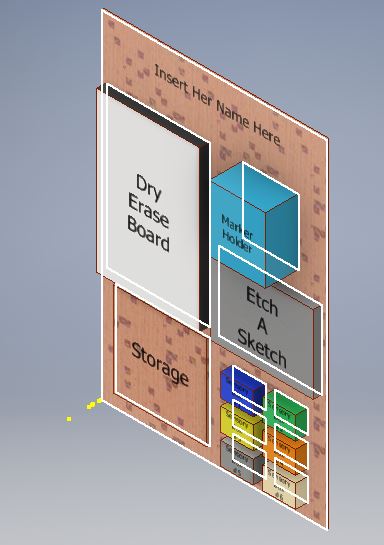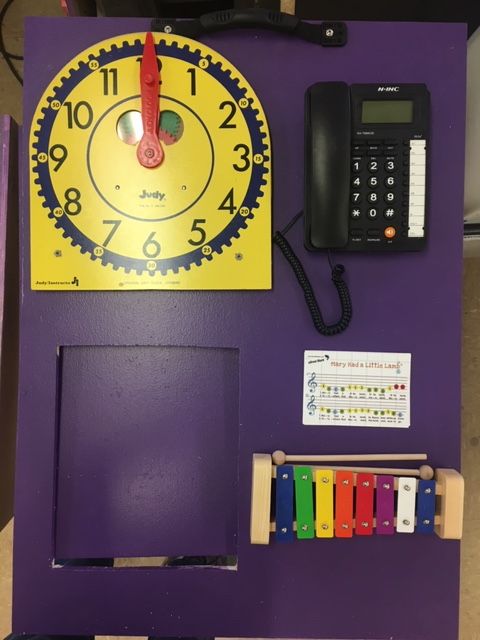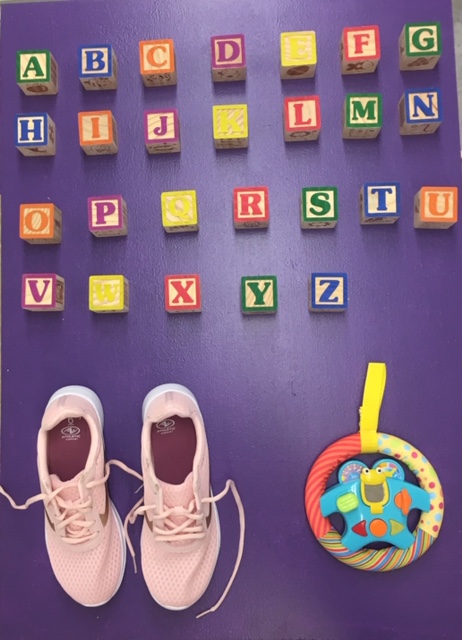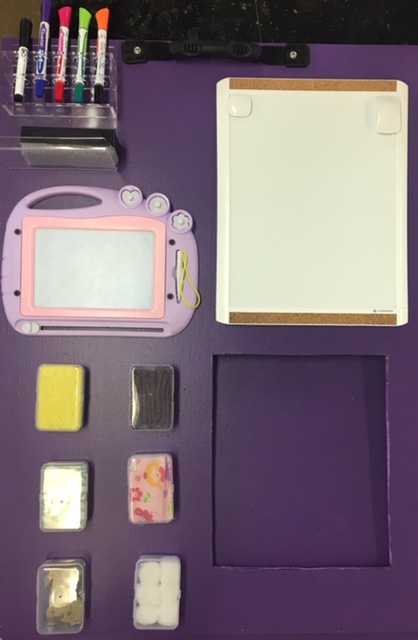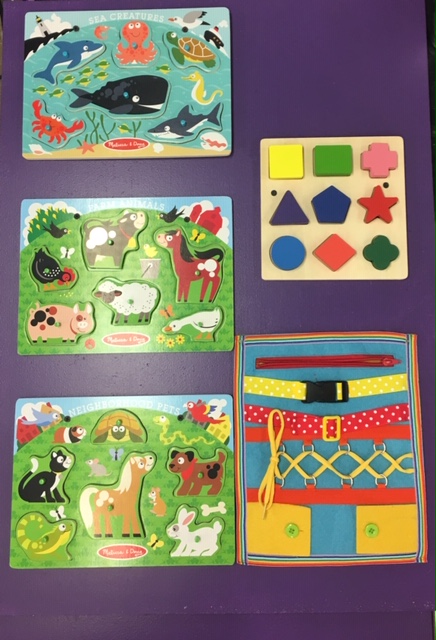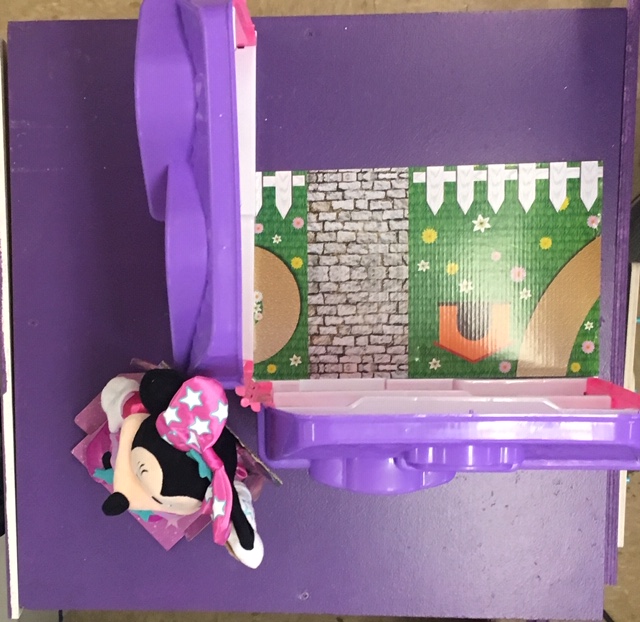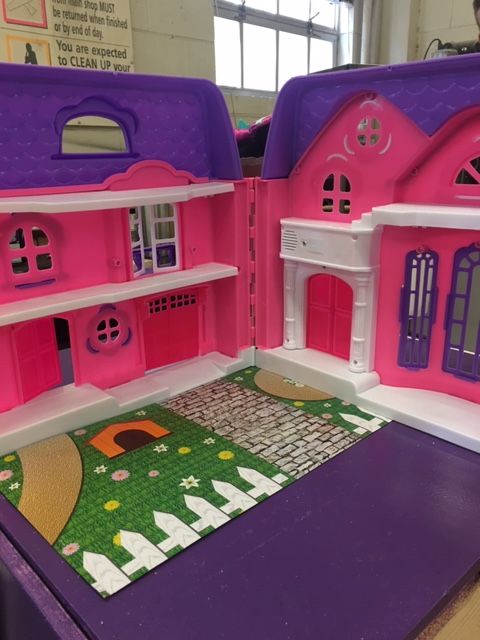Play Activity Learning Center
Contents |
Abstract
An infant, who has apnea and had a cerebral vascular accident as a newborn, is delayed in her fine motor skills and physical motor skills. She also favors her left hand while not using her right hand as much as she should. While Physical Therapy is helping, the parents are very, busy and the physical therapist office is far away from their home. The family is interested in an activity play center that can engage with their child’s motor skills and encourage her to use her right hand, implementing some of her physical therapy exercises. With this activity center, the family is hoping to be able to increase their daughter’s motor skills and use of her right hand from the comfortability of their own home.
- Trip Adams
- Jonathan Dagnan
- Dylan Davis
- Spencer Jones
- Joshua Morris
Problem Statement/overview of the need
An infant, who had a cerebral vascular accident as a newborn, is delayed in her fine motor skills and physical motor skills. She also favors her left hand while not using her right hand as much as she should. One of the biggest goals of the project is to help the child develop her finger movements to better her sensory and motor skills. Secondly, creating activities that incorporate physical therapy exercises into the activity center to progress the child’s right-hand use is another goal of the project. Additionally, the activities must be fun and captivating for not just a year, but for several years to come.
Design Specifications
Design Specifications
Priority Requests:
- Sound/Light Switches
- Something Light for easy storing or transporting
- Handles for a child to hold/pull up on
- Remove/Reattach sensory toys
- Incorporate Sound to help get her attention
- No small locks or keys
- Encourage use of right hand (like grasping a ball, dropping down a tube and catching it)
Additional Requests:
- Minnie Mouse Theme
- Pink/Purple Girly Stuff
- Handles on side
Our Ideas to Implement/ Physical Therapy
- Using gears and mechanisms around the activity center that creates movement, sounds, and lights on top of the center
- Ball drop
Background research
The current market for children’s activity centers consists mostly of smaller sized boxes or crates covered in toys targeting a general population of kids. These boxes target the largest group of children for obvious marketing purposes. This leaves more expensive, custom activity boxes as the only option for kids with more special needs. With the design specifications given, the best solution is for a custom box to be built directly to one child’s needs. This will allow for each device on the box to be beneficial to the physical therapy and long-term growth of the child. Our goal for this activity center is to use every opportunity to include devices that involve aspects of what our child works on with physical therapy, while also being entertaining so that the child enjoys doing those things.
https://www.rehabmart.com/product/deluxe-mini-play-cube-9362.html
https://www.rehabmart.com/product/play-table-set-2668.html
Conceptual Design
Summarize your conceptual design process. Develop at least three concepts.
Design Concept 1
We proposed a wooden box for one concept, this design would allow for four surfaces to be used for mechanisms and the top surface to be used for decorations as that was included in our design specifications. The box design can be fitted with handles around the perimeter to encourage our child to walk more. The handles would also make transportation much easier. This design would be relatively cheap as it uses more common materials than if it were made of metal. The construction of the box will be more durable than plastic which could be important as it would need to withstand minor damage from regular use. Size 2x2x3
Design Concept 2
Another concept involves a single, hangable board. This design would be made of wood allowing for resistance to wear and cost reduction. This would allow for great portability but also reduce the surface area available to place mechanisms on by 75% (assuming the board would be the same size as one side of the box) compared to design concept one. The board would need to be thicker to hide the screws and nails holding the mechanisms to the board, but that should not decrease the portability too much. The wall design easily allows for the supervising adult to observe how the child interacts with the devices.
Design Concept 3
Our final design consists of an inverted box. This design would be made of wood and other common materials. This design would allow for seven total surfaces to be used for mechanisms, or four if we were to only use the inside surfaces for devices and then use the outside for decorations. An advantage of this concept is that devices can be attached to the roof of the box requiring the child to look up and reach for things which have its own therapeutic advantages. Finally, this design would allow for the outside of the box to be used for decorations which were a major design specification from the client.
Evaluate concepts/select candidate
| Characteristics (1-5) | Design Concept 1 (Box) | Design Concept 2 (Wall) | Design Concept 3 (Inverted Box) |
|---|---|---|---|
| Portability | 4 | 2 | 3 |
| Durability | 4 | 4 | 3 |
| Looks | 4 | 3 | 2 |
| Ease of Use | 4 | 5 | 5 |
| Affordability | 4 | 4 | 4 |
| Use Duration | 5 | 5 | 3 |
| Total | 25 | 23 | 20 |
Using the scores above for reference and through talking about the design difficulties and potential flaws of each design we have decided to go with Design 1.
Design 2 is fairly close behind Design 1, but with it having to be hung on a wall, the activity board would only be able to be used in a single place. There is also a little more danger in this design due to the fact that if the board were to become unhinged it would be much more dangerous.
Design 3 is a good concept to get both her hands involved in reaching since she could have stuff to reach up and grab, but she would quickly outgrow this thus only allowing for potentially two to three years of use instead of potentially 5 or 6 years which both Design 1 and 2.
Also Note: We thought about other design concepts such a smaller device to implement one or two physical therapy exercises, but ultimate we felt it couldn’t be as useful as a larger box design. Another thought we had was to create an immersive play area, but with her being so young and the family wanting to be able to ensure the safety of the child and make it easily movable.
Detailed Design
Description of selected design
Here we detail the design of concept number 1 which was chosen in the previous section. This contains the general idea of concept 1, but with more detail towards satisfying the design criteria of making it age appropriate and implementing the requested theme.
- Review-this is a box designed to aid in the motor development and cognitive ability of a special needs child. The devices and design obviously need to be fun for the child to use so that she will willingly work on these specified areas of development.
- The box will consist of four walls that will be covered in devices geared toward specific physical therapy needs.
- The corners will be rounded off and covered in a thin sheet for added protection.
- The top will be theme specific with a play-house from design requirements (Minnie mouse)
- 2'x2'x3' oak wood panles.
Analysis
One analysis will be done on the gear train attached to one side of the box. Another will be done to analyze the need and purpose of each device. The last one will determine the force needed to tip the box at its extreme points.
Engineering analysis 1
The purpose of this analysis is to determine the gear ratio for the gears on the box.
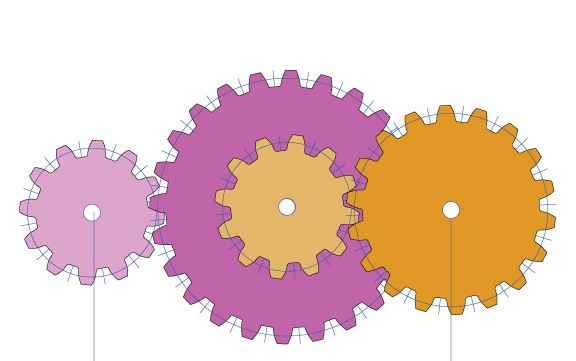
With an assumed angular velocity of 1 rpm the gear ratio is found to be 1:2/3.
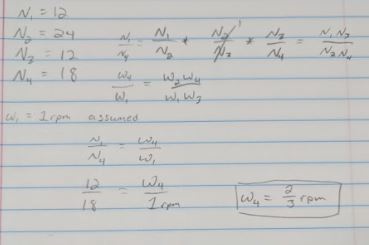
Engineering analysis 2
In this analysis, we look at the usage of the different parts of the box and how they are helpful to the child
- Wheel – implement a fun toy with the potential for a little resistance to engage both hands with a familiar device. And to understand the motion of a wheel.
- Light switch/ Light- provide a common household item for finger manipulation and connects to a light on top.
- Phone- to allow finger manipulation and understand how a common device in society works
- Door handle/knob– to allow finger/ hand manipulation and understanding of a common action
- A button that creates sound - to understand action and the results of the action
- Xylophone – to understand the concept of sound and usage of two hands to create the sound
- Clock – to allow her to develop an understanding of clock usage with finger manipulation
- Pocket – to allow storage for toys and responsibility for keeping up with toys
- Whiteboard – to allow for creativity in drawing and to develop control and use of hands
- Storage box - to allow storage for sensory devices
- Sensory Devices- Various types of touch/ sensory materials to develop an understanding of feeling different materials
- Gear System – understanding of how a gear system works and seeing the motion of the gears
- Shoes – provide practice in a common skill of tying one's shoe
- Learning Device – allow for a little digital learning while still being able to use her hands
- Castle – a castle on top to allow for fun with Minnie mouse while still using her hands
- Sounds- Button/buttons that trigger minnie mouse pre-recorded sounds, to encourage finger pressing and enjoyment
- Bell – to allow for finger manipulation to create sound
Engineering analysis 3
This analysis runs a stress analysis from Inventor to determine deflection and stresses at different points on the box.
We also looked into the weight and force analysis to see how much force it would take to move the box and moment to tip over the box
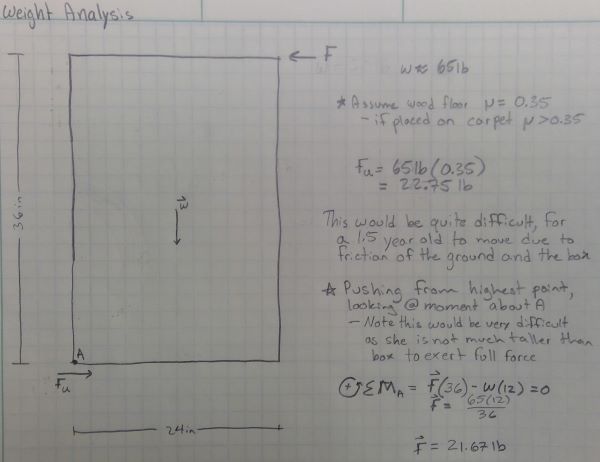
CAD Drawings
Bill of Materials
qty, item, description, source, part number, price
| Item | Description | Price | Quantity | Link | Total |
|---|---|---|---|---|---|
| Phone | 8"x6" | $14.99 | 1 | Phone | $14.99 |
| Light Switch | 4.7"x3" | $15.36 | 1 | Light Switch | $15.36 |
| Clock | 13.6"x13.5" | $19.05 | 1 | Clock | $19.05 |
| Minnie Mouse Singing Doll | Doll | $9.99 | 1 | Doll | $9.99 |
| Magna Doodle Etch | Drawing Board | $10.99 | 1 | Etch | $10.99 |
| Dry Erase Board | 11"x17" | $6.83 | 1 | Dry Erase Board | $6.83 |
| Dry Erase Marker Set | 6 Kid Friendly Markers | $2.99 | 1 | Markers | $2.99 |
| Marker Holder | Holds Markers | $14.99 | 1 | Marker Holder | $14.99 |
| Dry Eraser | Eraser for Markers | $2.79 | 1 | Eraser | $2.79 |
| Boxes | Sensor Boxes | $17.99 | 1 | Boxes | $17.99 |
| Velcro | Velcro for Boxes | $2.88 | 5 | Velcro | $14.40 |
| Doll House | Minnie Mouse Themed | $59.26 | 1 | Doll House | $59.26 |
| Xylophone | Kid Friendly | $12.99 | 1 | Xylophone | $12.99 |
| Handles | For Carrying Box | $9.39 | 1 | Handles | $9.39 |
| Shoes | Minnie Shoes | $19.99 | 1 | Shoes | $19.99 |
| Wheel | Steering Wheel | $14.00 | 1 | Wheel | $14.00 |
| Wood Blocks | Colorful Blocks | $28.51 | 1 | Blocks | $28.51 |
| Seat Belt | 48" | $11.35 | 1 | Seat Belt | $11.35 |
| Animal Puzzle | Puzzle | $19.99 | 1 | Animal Puzzle | $19.99 |
| Shape Puzzle | Puzzle | $14.95 | 1 | Puzzle | $14.95 |
| Board | Learn to Dress Board | $15.99 | 1 | Board | $15.99 |
| Ply Wood | 2'x4' | $14.48 | 6 | Ply Wood | $86.88 |
| Various Hardware | misc items ie screws, corner braces, rounded corner safty, triangle elevation blocks, hinges, electrical wires, light bulb, spray paint | $100 | 1 | In Lowes | $100 |
| Sensory Items | Rocks, golf balls, etc | $35 | 1 | Various outlets | $45 |
| Rack & Pinon | Turn wheel | $10 | 1 | Gears/ Rack | $10 |
| 3D Filament | 2-3 kg | $20 | 1 | Filament | $20 |
| T-Slotted Framing Fixed Height Mounting Foot | For Storage Area | $12 | 4 | Mounting Foot | $48 |
Around $650
Assembly Instructions
Fabrication Process
Testing and implementation
Describe testing, delivery, how used/received by the family We tested the Center by going through to examine and use each of the objects and activities on the box. We subjected them to an ample amount of force to make sure they didn't break and that everything functioned correctly. We had to use an SUV to deliver the box because it ended up being a little larger than expected, but fit perfectly through the doors of the family's home. The little girl really enjoyed playing with the learning center and went around to each side to play with all the different activities. Her favorites were learning how to open the storage compartment, using the phone, and taking off the velcroed animal puzzles.
Photos of Completed design
Insert pictures of the final product
Instructions for safe use
Do not use the device unless supervised by an adult that has been fully understood the safe use of this product. There are some small pieces that could be considered a choking hazard, please always keep an eye on whoever is playing with the center. There is a small possibility for tipping over, please do not shake or tip as this could cause injury. Sticking fingers in small places could cause pinching.
Project Summary, Reflection
The project was somewhat hard and challenging, but very rewarding. We had to use a variety of tools and understand how a machine shop functions to complete the project. Working as a team was paramount to getting the job done. While it took a while to get going, once we got down to business and were focused we were able to tackle and complete many objectives. Being able to watch the little girl enjoy and play with the activity center made all the hard work and hours put in worth it.
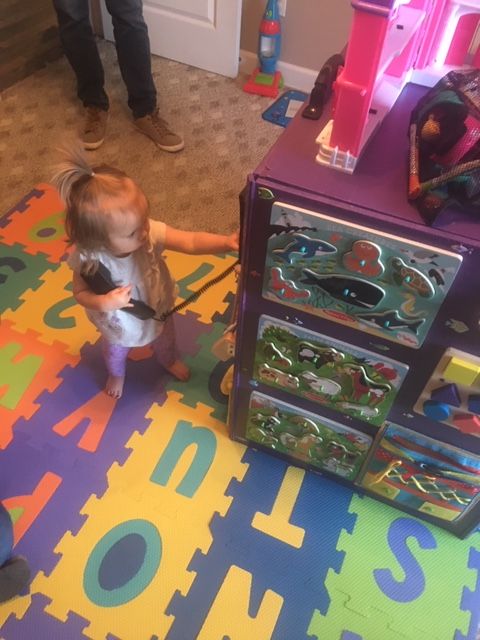
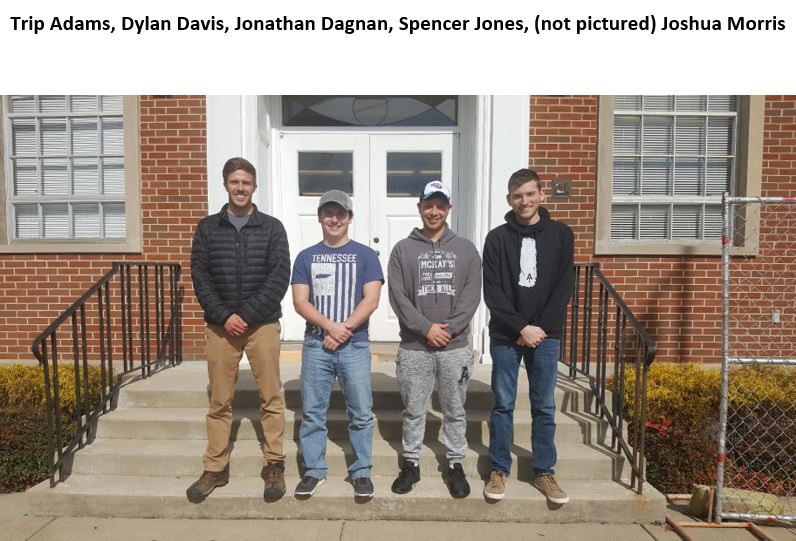
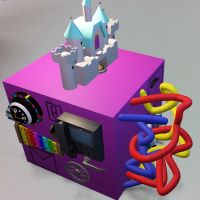
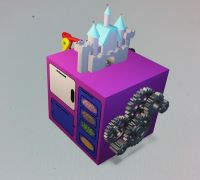
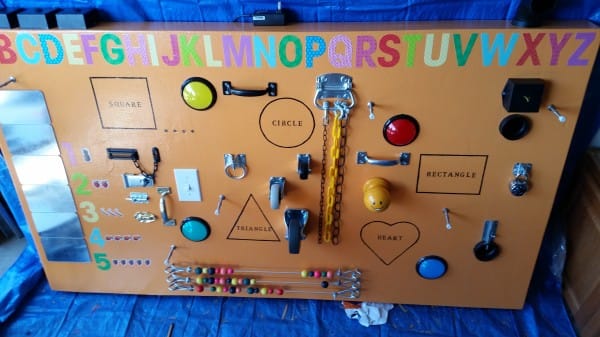
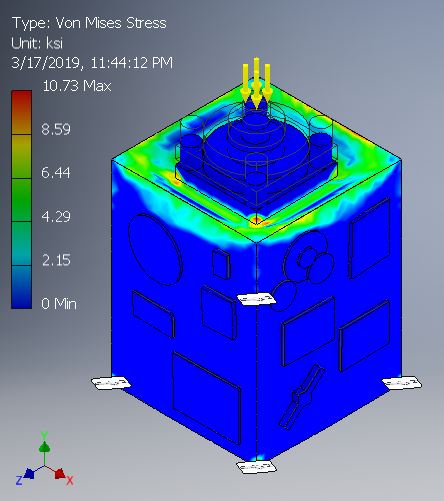
.jpg)
.jpg)
